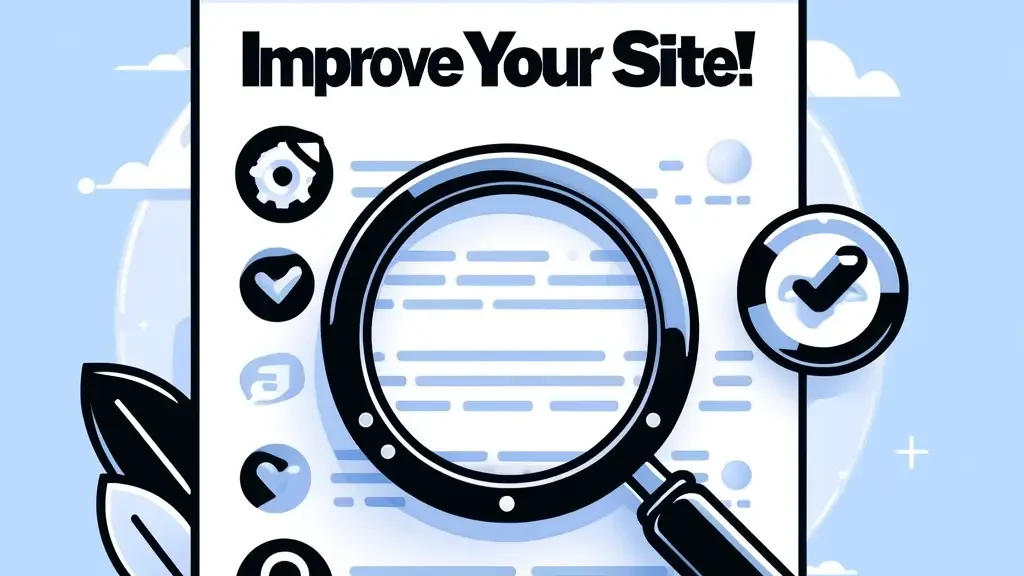Understanding the Role of a Webmaster in SEO
.
How SEO improves website visibility?
.
A webmaster is responsible for managing and maintaining a website to ensure it performs well in search engine results. I.They play a crucial role in optimizing a website for search engines, which involves tasks like improving site speed, fixing broken links, creating sitemaps, and optimizing content for keywords. Webmasters also monitor website performance, fix technical issues, and ensure the site is user-friendly. By actively engaging in SEO practices, webmasters help websites rank higher in search engine results, driving more traffic and increasing visibility online,there is always one question came in mind: How SEO improves website visibility?
.
Importance of SEO for Your Website
Having strong SEO for your website is crucial as it helps your site rank higher in search engine results, making it easier for people to find you online. Here are a few reasons why SEO is essential:
- Increased Visibility: SEO improves your website’s visibility in search engines, increasing the chances of attracting more visitors.
- Better User Experience: By optimizing your site for SEO, you are also enhancing the user experience, making it easier for visitors to navigate and find what they are looking for.
- Builds Credibility: Websites that appear higher in search engine results are often perceived as more credible and trustworthy by users.
- Higher Traffic: With improved visibility and ranking, your website is likely to receive more organic traffic, leading to potential conversions and business growth.
Key Elements of a Search-Friendly Website
Keywords, meta descriptions, and alt text for images are essential elements for a search-friendly website. They help search engines understand your content better and improve your site’s visibility. Keeping your site’s content fresh, relevant, and easy to navigate is also crucial. Mobile responsiveness is another key factor. Search engines prioritize mobile-friendly websites, so make sure your site looks good and functions well on mobile devices. Regularly updating and monitoring your website for broken links and page loading speed are important for a search-friendly site.
On-Page SEO Checklist for Webmasters
To improve your website’s visibility on search engines, you need to pay attention to on-page SEO. Here’s a checklist to guide you through optimizing your web pages:
- Start by conducting keyword research to understand what terms your target audience is searching for.
- Optimize your page titles by including relevant keywords and keeping them under 60 characters.
- Create unique meta descriptions for each page, summarizing its content in around 150-160 characters.
- Craft high-quality, relevant content that provides value to your visitors and incorporates your target keywords.
- Use descriptive URLs that include keywords to help search engines understand your page’s content.
- Optimize your images by using descriptive filenames and alt text containing relevant keywords.
- Ensure your website loads quickly by optimizing images, utilizing browser caching, and minimizing server response time.
- Implement internal linking to help search engines navigate your site and understand its structure.
- Include a sitemap to ensure all your pages are indexed by search engines effectively.
- Check for broken links and fix them promptly to maintain a seamless user experience and avoid negative SEO impacts.
Off-Page SEO Practices and Their Impact
Off-Page SEO practices are actions taken outside of your website to improve its search engine ranking. These practices can boost your site’s authority and relevance, helping it rank higher in search results. Off-Page SEO includes activities like building backlinks from reputable websites, engaging with social media platforms, and getting mentioned on industry-related blogs. These practices signal to search engines that your website is valuable and trustworthy, leading to improved visibility and organic traffic.
Technical SEO Considerations for Webmasters
When it comes to technical SEO considerations for webmasters, there are a few key points to keep in mind for maintaining a healthy, search-friendly website. Here’s what you should focus on:
- Site speed: Ensure your website loads quickly as slow loading times can impact your search rankings.
- Mobile optimization: Make sure your site is optimized for mobile devices as Google prioritizes mobile-friendly websites in search results.
- Crawlability: Ensure search engines can easily crawl and index your website by using a clean site structure and sitemap.
- Indexing: Regularly check to ensure that all important pages on your site are being indexed by search engines.
- Structured data: Implement structured data markup to help search engines better understand your content and display rich snippets in search results.
By paying attention to these technical SEO considerations, you can improve your website’s visibility and performance in search engine results.
Optimizing Website Speed for Better SEO
Website speed is crucial for SEO. A faster website provides a better user experience and can improve your search engine rankings. Here are some steps to optimize your website speed for better SEO:
- Minimize image sizes: Compress images to reduce loading times.
- Enable browser caching: This allows frequent visitors to load your site faster.
- Reduce server response time: Ensure your server responds quickly to user requests.
- Use a content delivery network (CDN): Distribute your website content across multiple servers for faster delivery.
By following these steps, you can enhance your website speed and boost your SEO performance.
Mobile Responsiveness and SEO
For your website to rank well on search engines, it’s crucial to ensure it’s mobile-responsive. Mobile-friendly websites are favored by search engines, improving your site’s visibility. Make sure your site’s design adapts well to different screen sizes, providing a smooth user experience on all devices. Google’s Mobile-Friendly Test tool can help you assess your website’s mobile responsiveness and identify areas for improvement. Improving mobile responsiveness can boost your SEO rankings, driving more traffic to your site.
Monitoring and Analyzing SEO Performance
To keep track of your website’s SEO performance, regularly monitor your website traffic, keyword rankings, and backlink profile. Utilize tools like Google Analytics and Google Search Console to gather data on how your website is performing in search results. Analyze this data to identify areas for improvement and make necessary adjustments to enhance your website’s search visibility. Tracking and analyzing your SEO performance is crucial in ensuring that your website remains healthy and search-friendly.
Regular Maintenance for Sustaining SEO Success
Regularly updating your website’s content, fixing broken links, checking for duplicate content, and optimizing images are essential tasks for maintaining a search-friendly website. These maintenance activities help search engines crawl and index your site effectively, improving your website’s visibility in search results. By staying proactive and consistent with your site upkeep, you can ensure that your SEO efforts continue to bring in valuable organic traffic.






